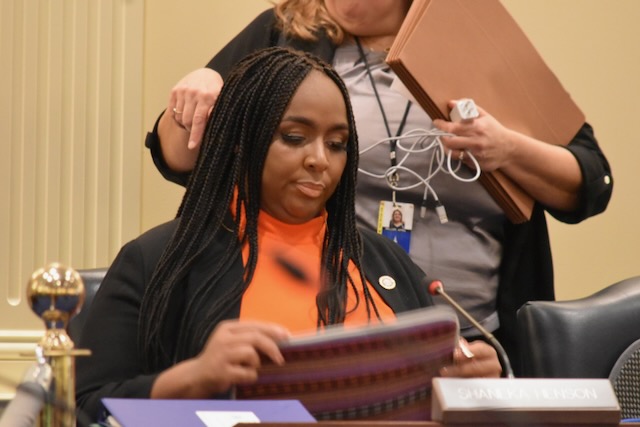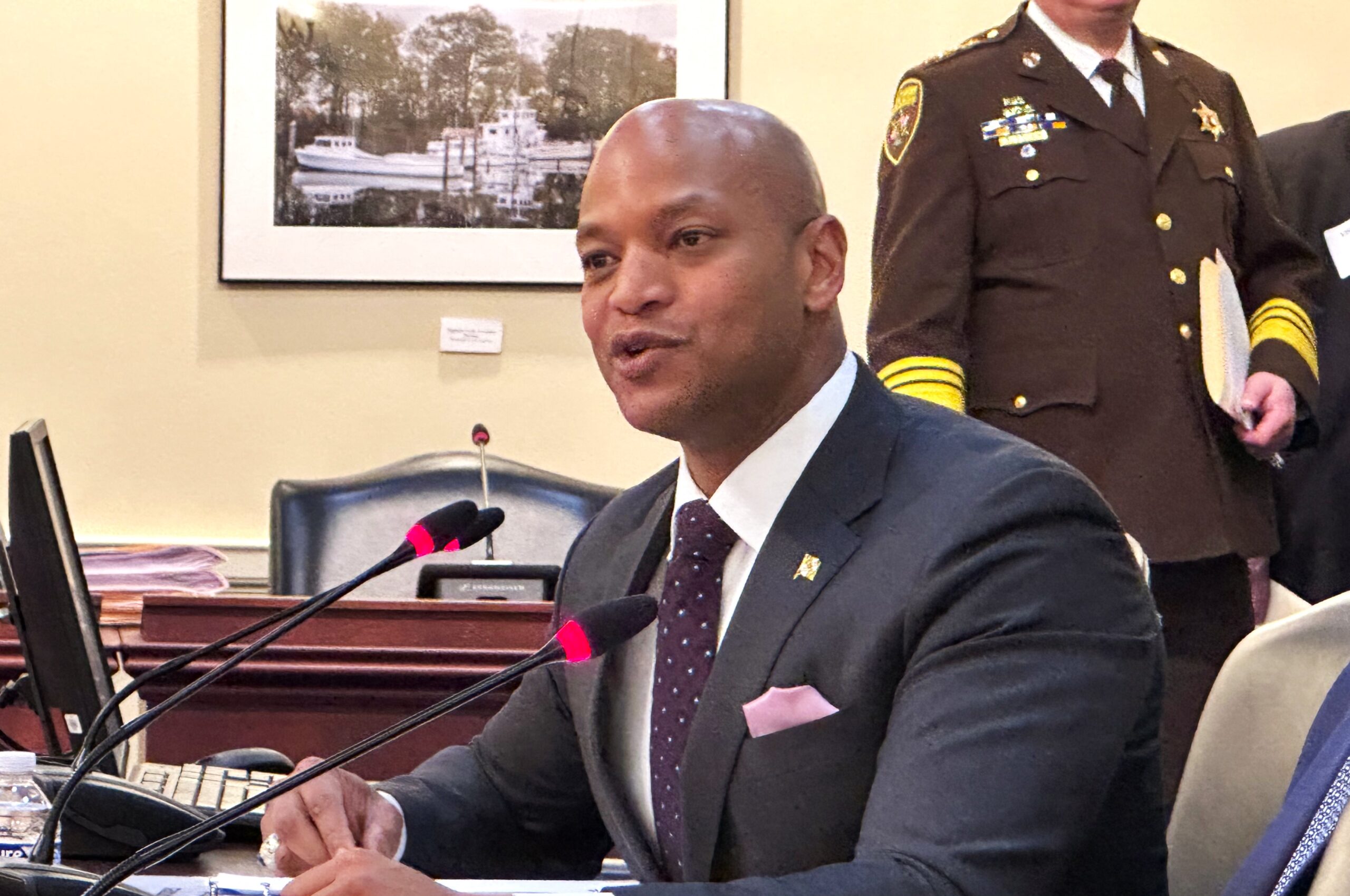Transparency of Maryland state’s attorney’s offices is the focus of a newly structured task force

A legislative work group established to assess data collection and policies of Maryland state’s attorney’s offices met for the first time Wednesday, but will have two months to provide recommendations on what information prosecutors should make public.
The group co-chaired by Sen. Charles Sydnor (D-Baltimore County) and Del. David Moon (D-Montgomery) was created in 2022 by Senate Bill 763, which was part of a criminal justice reform package passed after the killing of George Floyd by former Minneapolis police officer Derek Chauvin.
“It came out of a time when we were looking at a range of data for judges, prosecutors and the like…and this is one of the pieces that popped out,” Moon said Wednesday. “To be clear, we’re just talking about pulling together recommendations that may go into law, then get debated through the normal legislative process. So, we’re not actually making any decisions here.”
The Task Force to Study Transparency Standards for State’s Attorneys began no work last year because no members were appointed.
Sydnor said in a brief interview Tuesday that appointments were made this summer.
Gov. Wes Moore (D) appointed two individuals on the 14-member board Aug. 9. They are Mona Sahaf, acting director of Vera Institute of Justice’s reshaping prosecution initiative, and Heather Warnken, executive director at the Center for Criminal Justice Reform at the University of Baltimore School of Law.
The first part of a nearly 2 1/2 hour online session focused on a presentation by Rich Gibson Jr., state’s attorney for Howard County and president of the Maryland State’s Attorneys’ Association.
While a number of criminal court records are public, Gibson said the grand jury process remains a secret for two reasons: the allegation against a person under investigation could damage their reputation, especially if that person is innocent. Second, “behaviors of individuals change if they know they are being monitored.”
Gibson shared how prosecutors in the state’s 23 counties and the city of Baltimore assess plea agreements using the Maryland State Criminal Sentencing Commission Policy guidelines.
He showed a chart used to calculate sentencing guidelines based on two categories: an offender score that would assess a person’s criminal history and a score to determine the seriousness of the crime committed.
Those two numbers are used to generate a score based on a sentencing matrix that resembles a bingo card. For example, if a person receives a four in both categories, that person would land on the three- to seven-year prison sentence block.
The lowest score a person could receive is a one, with a recommended sentence of probation.
Gibson said the guidelines don’t take into account any demographic information such as race, gender, ethnicity and sexual orientation.
Although law enforcement officials take that information on police reports, Gibson said prosecutors don’t collect demographic data.
“We don’t look at race as it relates to the strength or weakness of the case,” he said. “Does it match what the victim describes? Is race even relevant? It might not be relevant in some cases because the victim never said my assailant was Black, or my assailant was white, or my assailant was male or female. When they say those things, then it becomes relevant from our perspective as state’s attorneys.”
Gibson said some state’s attorneys don’t want to make some policies public. He said Howard County had a policy for several years to not prosecute certain marijuana cases.
Adult cannabis use became legal in Maryland for those 21 and older in July.
“I never wanted to announce that policy to the public because I don’t want to in any way encourage the use of marijuana,” said Gibson, who added some residents may not support cannabis use.
In terms of financial resources, Gibson said they remain a challenge, especially when depending mostly on county budgets. He said most state’s attorneys’ offices don’t employ statisticians.
Given certain financial or other resource constraints, Warnken asked if data collection is a priority.
“If I got money from my county council and I had to choose how best to use that to effectuate justice in my space, statistician would not be my first choice,” Gibson said.
‘Accountability for public actors’
Sahaf, a former federal prosecutor who began working with Vera Institute two years ago, said Vera has worked nationwide with prosecutors on how to collect and assess data.
She said local school districts and health care organizations collect and release information that includes race and ethnicity and “publishing that information in the aggregate so that you know how their system is working.”
“Like education, like health care, prosecutors and their decisions have [an] incredible impact on the health and well-being of our society,” she said.
Sahaf presented several recommendations for state’s attorneys to collect and assess data such as total number of cases referred from police, cases declined, cases dismissed, cases resolved by plea agreements and cases that go to trial.
In terms of individual cases, state’s attorneys’ offices could collect details on the specific offenses, who was the assigned prosecutor and characteristics of victims and defendants.
Sahaf said prosecutors could receive help collecting and studying data from local colleges and universities.
“We need accountability for our public actors, particularly when they have a lot of influence,” Sahaf said. “The job of every public servant, no matter what sector you come from, is to deliver justice. That means making sure that everyone in the community…being treated justly and fairly. You don’t know if you’re doing that unless you’re collecting data and you’re looking at the data.”
Sen. Mike McKay (R-Allegany), a member of the task force, said he was confused by Sahaf’s presentation, which he compared to “trying to get a drink [of water] from a fire hydrant.”
“If this information is good for researchers and advocates, how does it protect what the state’s attorneys are supposed to do in protecting the public?” he said. “What’s important to Allegheny County is certainly not even important to Washington County, which is next door.”
Sahaf said data allows residents to know how state’s attorneys are making decisions.
“How could anyone say if they’re doing well, if they’re not measuring progress on what they’ve pledged as their priorities?” she said. “Collecting more data and collecting it more accurately are absolutely within your sights. I’d say it’s very much the responsibility of prosecutors to do.”
The task force plans to meet again at 10 a.m. Nov. 1. A report with recommendations is due by Dec. 31 to the Senate Judicial Proceedings and House Judiciary committees.




 Creative Commons Attribution
Creative Commons Attribution